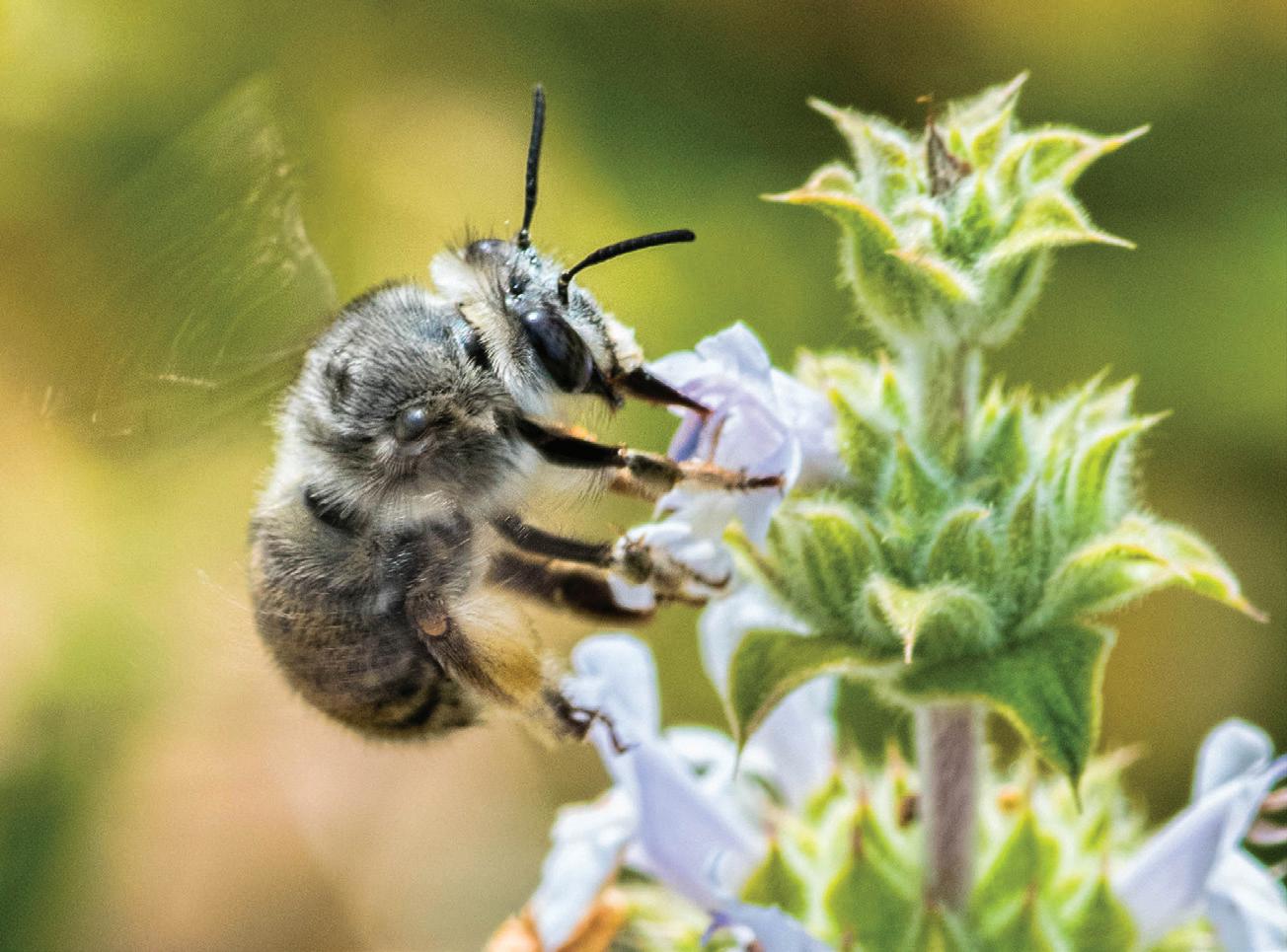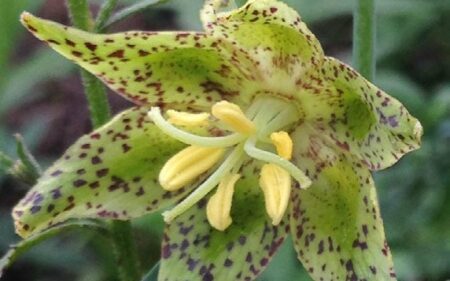Climate and the Biodiversity Crisis: Planting Solutions
As we collectively witness a barrage of climate disasters sweep across the planet, many of us are asking, “What should I be doing to protect my planet, my community, and the place that I call home?” Fundamentally, we know we must reduce our greenhouse gas (GHG) emissions by using public transportation, composting green waste, reducing landfill trash, shrinking food waste, employing renewable energy, and myriad other behavior changes. But is there more we’re not considering?
It turns out that the natural world offers deeply hopeful solutions to climate change. Referred to as “nature-based climate solutions,” the intentional use of plants and soil can address two equally important climate problems. First, nature-based solutions can reduce the levels of atmospheric GHG’s, which are the cause of climate change in the first place. Second, they can build the resilience we need to recover from climate-related disasters. Nature-based solutions remind us of the elegance and power of a simple tree rooted in the soil, doing what it does best. Through photosynthesis, a tree can transform carbon from an adversarial atmospheric pollutant back into its essential function as the core building block of all living things. Indeed, plants and soil have the potential to dramatically shift our climate future. However, in our frenzied desire to fix our broken climate, we must not lose sight of the forest for the trees. It is native biodiversity, that is, all the living things that evolved in a given area that shaped the places we call home. Together, native plants and the soil dwellers beneath them harness the power of the sun and the nutrients in non-living matter and mediate their eventual passage through every living thing on the planet. Native biodiversity creates the characteristics of the water cycle, soil fertility, temperature, and intricacies of the web of life that define the world’s ecosystems.
California’s iconic oak woodlands, made up of thousands of species, are a perfect example of this intricate web of life. Look closely at that stalwart, fire-resistant oak and you might see that a tiny gall wasp, Andricus quercuscalifornicus, has laid its eggs in the central veins of some leaves. The eggs induce the leaves to create “oak apple” galls, strange golf-ball-like growths in which the wasp larvae and a diverse cast of other characters, will make their living. The gall is both food and home for the larvae, and a world unto itself. Like something out of a sci-fi story, parasitic wasps (called parasitoids) lay their eggs by piercing through the tough gall wall so that their larvae can feed on the bodies of some of the Andricus wasp larvae. The parasitoid devours the inside of the larval gall wasp, finally killing its host and emerging as an adult from an empty shell of a former Andricus larva. The story gets even more complicated when we factor in hyper-parasitoids (yes, parasitoids of parasitoids), some “neutral” guest insects living inside the galls, multiple species of oaks, multiple species of gall wasps and parasitoids, numerous birds, and other creatures that feed on the gall dwellers, and so on. Like this, the complex and silent dramas of the oak woodland unfold. As we lose this habitat to the forces of climate change and urban development, the total we lose is so much more than the sum of its parts.

In terms of climate benefits, the estuaries of the world play a disproportionately large role. Also called tidal marshes, these are the magical places where a river meets the ocean, where water depth changes according to tides, and plants can live in water that’s sometimes salty and sometimes not. It’s where all sizes of skinny-legged shorebirds – 43 species in California estuaries alone – dart around looking for food, segregating where they forage based on the depth of the mud and water. These are the most productive ecosystems in the world, annually yielding more plant and animal matter per acre than even tropical evergreen forests. When estuaries are intact, their storm buffering services can rival the strongest of seawalls, sequestering carbon, filtering water, and producing our food all the while. In California, as sea levels rise, tidal marshes have a monumental role to play in building resilience. Taking a closer look at just one of their crucial functions, scientists estimated that California’s estuaries perform nitrogen pollution removal services that, in today’s dollars, are worth around $7.5 billion.1 Without estuaries doing this critical filtration for us, we have to engineer and maintain costly solutions to keep our shorelines and fisheries free of pollution, and an integral part of our food supply intact. Despite the fact that globally, estuaries provide habitat to about 85% of all seafood sold, in the last 100 years we have dredged, filled in, and otherwise destroyed over 75% of them here in southern California. Today’s society is learning what those who stewarded the land in centuries past knew: our fate is intertwined with that of the tidal marshes. There are numerous efforts underway to restore these essential habitats, with native plant species forming the core of everything that a tidal marsh does.



In recent years, we in North America have learned about staggering declines of managed European honey bee populations and the potential impacts their loss could have on our food supply. But did you know that there are about 4,000 species of native bees in North America alone? Most of them don’t produce honey or move about the landscape in giant swarms. Instead, they nest in those tiny holes you might notice on a patch of bare sandy soil, or in dry twigs under a shrub or any number of other places that we forget to think of as habitat. It turns out that as our dependence on honeybees has grown, our populations of native bees have dwindled, impacted by habitat loss, pesticides, and competition from non-native species. Research shows that providing small patches of habitat – native plants, bare ground, debris, and such – can help native bees make up for the lost pollination services of disappearing honey bees, and then some. That redundancy, those multiple ways to secure pollination even in the face of a major setback, constitutes true resilience.

Today, along with climate change, biodiversity loss is one of the biggest planetary crises we face, and the two are locked together in a mutually reinforcing loop. As the climate warms and precipitation patterns change, native species struggle to adapt to the pace of change that is causing a progression of drought, disease, pest outbreaks, fires, soil erosion, and floods, to name a few. These events lead to loss of native plant populations along with their stored carbon, and further exacerbate GHG emissions, perpetuating the cycle between the causes and the consequences of climate change. Similarly, as urban sprawl gobbles up native habitats, GHG emissions rise sharply, and on and on it goes.
Some argue that we just need to plant any species to arrest the climate catastrophe. We know, however, that an increase in non-native plants can lead to declines in insect diversity. Such losses can cascade into impacts on birds, other groups of animals, and the silent ecological services that native food webs perform. Besides that, non-native plants can fast become invasive monocultures, changing the conditions of the habitat so much that natives get squeezed out. Invasives do cover the soil and store carbon, but they also have some very harmful impacts. For example, they can radically alter the patterns in which water loops between the atmosphere, water bodies, soils, plants. These far-reaching changes make it unpredictable for living things – including us – to acquire that water when and where it’s needed. Native plants, on the other hand, are adapted to (and also shape) the moisture, soil, and other conditions of that place. For us, this means less maintenance is needed when we plant them in human-managed spaces.

While the bad news is the reinforcing loop between climate change and biodiversity loss, the good news is that there are ways to address both. If “nature-based solutions” are our best answer to the climate crisis, “biodiversity-based solutions” are our best way to address the cascade of consequences. So, when we install bioswales to filter stormwater or laundry greywater, why not choose locally native plants, and attract native insects that can act as garden pollinators and pest predators? Likewise, cooling our homes and city streets by planting not just any trees but native trees will invite native insects, birds, and a host of other living things, along with the invisible, irreplaceable functions they support.
With native plants as the foundation of our nature-based climate solutions, we can remove GHG’s, support species whose wild habitats are disappearing, and advance resilient food webs and ecological processes. Whether it’s a pot, planter, or patch of ground that you have access to, a native plant rooted there matters to all life on the planet, most of all our own.
About the author: Puja Batra, Ph.D., is Principal of Batra Ecological Strategies, based in San Diego, California. She works with local government and non-profit clients to develop, implement, and communicate equitable nature-based climate solutions that integrate policy, economics, and science.
1 Cloern, J.E., et al. 2016. Estuaries: life on the edge. In H. Mooney and E. Zavaleta (eds.) Ecosystems of California (p. 359-387). University of California Press
 Donate
Donate




